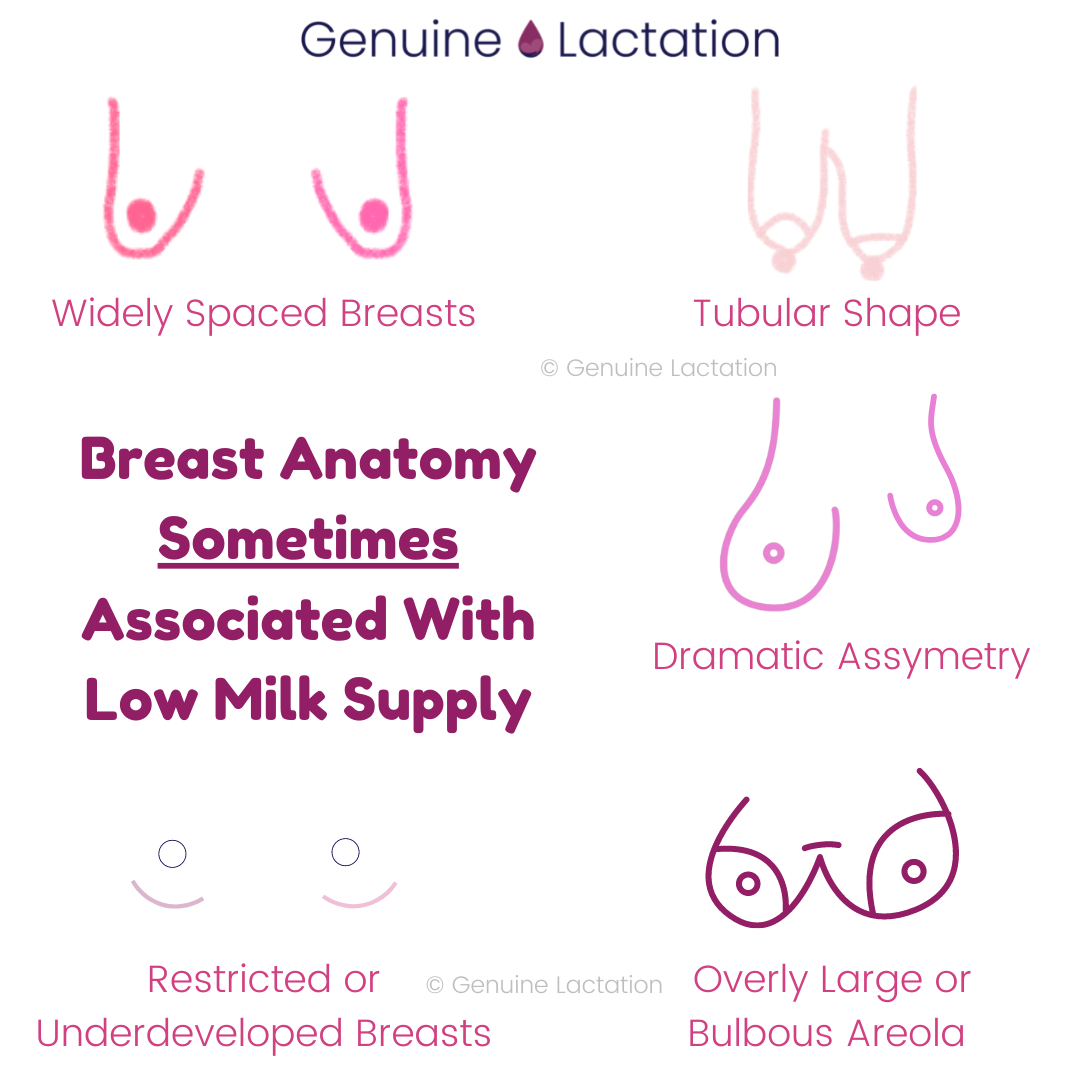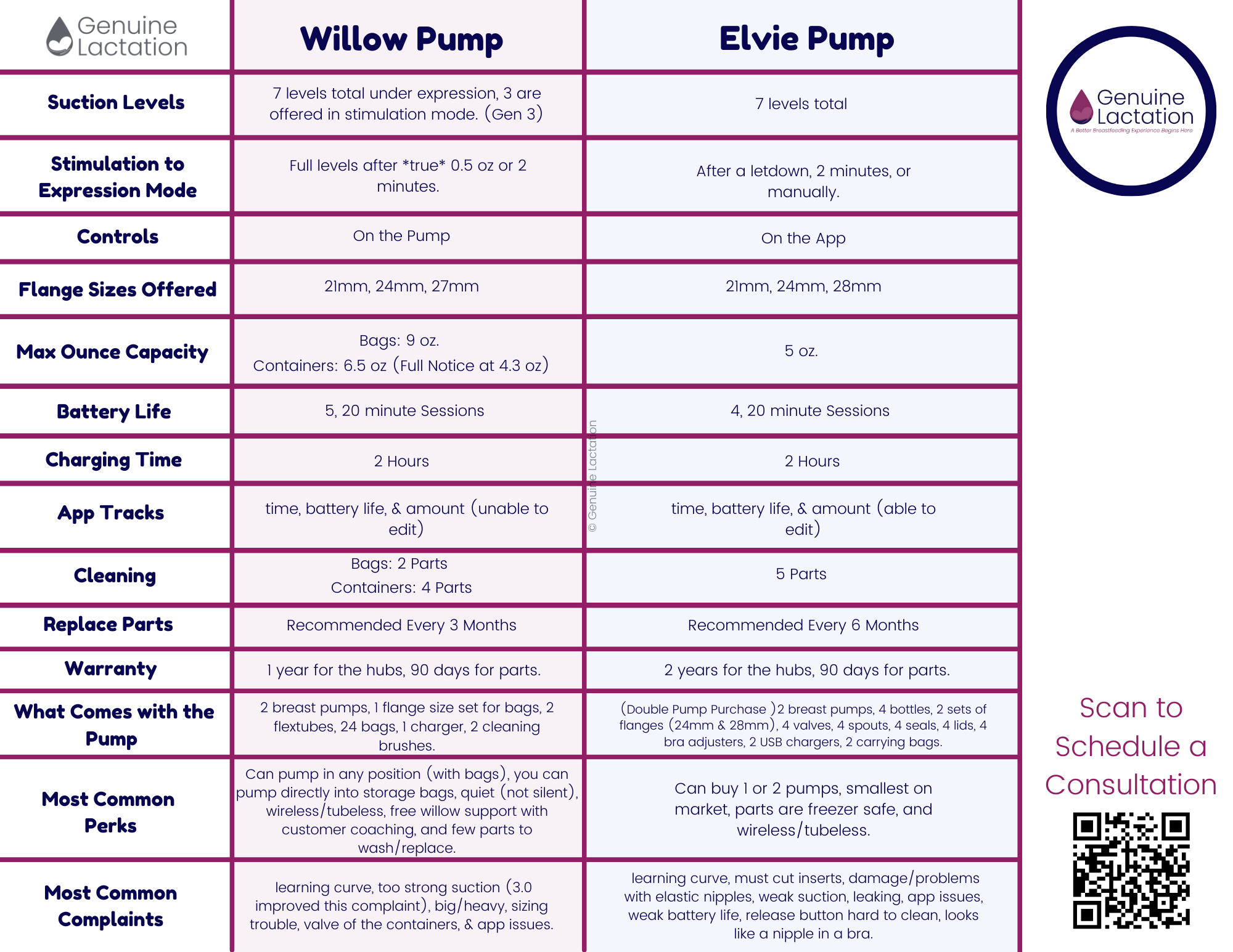Willow Pump and Low Milk Supply
Low milk supply can be really stressful, and for some parents, it means the need to pump (whether that is what they wanted or planned) to keep the milk flowing. Pumping is a true act of love for your baby - it’s not fun, it’s not easy, and it’s time consuming. Naturally, pumping parents want to find the pump that is going to work best for their situation and their lifestyle. Finding the right pump for your needs can make pumping truly work to meet your goals even with low supply.
This isn’t as simple as answering the question, “Is the Willow Pump a good pump for low milk supply?” We need to look at the various factors and situations that can cause low milk supply and how the Willow might impact those factors.
If your low supply is related to your baby being unable to independently manage the milk supply at the breast, and you are both pumping and nursing, Willow could potentially be a good pump for you:
Some babies nurse at the breast happily, but they lack the skills necessary to sustain the parent’s milk supply. In cases like this, we supplement the stimulation and milk removal at the breast with the stimulation and milk removal from a breast pump. This does require the parent to pull double duty and both nurse and pump, often supplementing the baby with bottles as well. Depending on the cause, this could go on for an extended period of time. Willow is a great pump to help alleviate some of this burden on the parent by at least making pumping something they can do while holding their baby, moving around freely, and allowing them more freedom than the traditional pump would. For some parents, the choice in public is to pump and bottle feed to reduce stress when out and about, and Willow allows discrete pumping while being able to manage your baby’s needs simultaneously.
The degree of low supply matters when deciding which pump is right for you:
Low supply is a spectrum with some parents making drops of milk, and others making milk just short of their child’s needs. The amounts of milk being produced may influence your choice of pump. Willow bags can hold 4.5 ounces each (or more), and you need two bags at a time to double pump. Willow containers can hold 4 ounces each (or more) and are reusable. The pump does not allow for controlling stimulation vs expression manually, and only the Willow Pump Gen3 moves to expression regardless of output.
Control over suction is limited until you have produced 1/2 an ounce on each breast during the pump session. For some people, this means they may never gain access to the suction levels they need or the expression mode at all for Gen1 and Gen2. The bags can cause a small amount of milk to be lost by getting stuck, and while it’s a small amount, it does seem to be more than with other bottles and collection devices.
The containers cause less loss of milk, but there is certainly still some that can’t be removed, and the containers are prone to errors due to the valve and design. This can be a serious consideration for low supply parents as missing a session due to a malfunctioning pump may harm their supply more than it would for a normal supply. If you tend to produce less than 1/2 an ounce on each side, or it takes more than 10 minutes to get that 1/2 ounce, this may not be the right pump for you.
If you are exclusively pumping due to low supply:
Sometimes, low supply makes nursing very complicated and the parent opts to exclusively pump to provide their milk. The Willow Pump is particularly appealing with exclusively pumping parents because it could theoretically allow you to fit pumping in whenever and wherever without reshaping your life.
The caution with this is that Willow is not necessarily a great pump for exclusively pumping because the portability is the trade off for the durability and long term ability to drive milk supply we aim for. What I often recommend for exclusively pumping parents is to find a few sessions a day to use the traditional and more effective pump, and then, use Willow other times to reduce the burden of pumping. This way, we reduce the risk of overall lowered supply due to using the wrong pump for this purpose.
It is important to note that some parents respond very well to the Willow and do use it exclusively without issue, but in my experience, those are not low supply parents seeing that success.
If you are dealing with breast anatomy that is associated with low supply, there may be things to consider:
Tubular Shape: You may struggle with downward pointing nipples that make pumping hard as the nipple needs to be at an almost 90° angle with traditional pumps. The Willow can be used with bags in a variety of positions which may allow you to work with your natural anatomy versus fighting against it.
Restricted or Underdeveloped Breasts: The Willow does need to be able to latch to the tissue to pump comfortably, and with minimal tissue, and a common lack of elasticity, the breast may not fit deeply enough against the Willow flange to pump properly.
Bulbous Areola: This tends to be seen with hyper elasticity of the breast tissue, and it may be problematic as the nipple may stretch past the inserts. It may also be difficult to find a bra fit that’s supportive without compressing the breast tissue too much as the areola can act as a separate structure from the breast.
Asymmetrical Breasts: This won’t actually impact pumping, but it isn’t going to help disguise the asymmetry by any means. Willow is discrete in that you remain clothed, and most people are oblivious to the size increases. Asymmetries do highlight that you are wearing the pumps. For some, this is a problem, and it inhibits them from pumping in public. This pump is certainly one of the less discrete wearable options if that is a concern for your comfort level.
If your low supply is related to previous breast surgery or nerve damage in the breast:
Breast implants, breast reductions, biopsies, spinal injuries to the nerves innervating the breasts….these are all issues that can impact milk supply. The damage to the milk ducts can lead to limited usable mammary tissue. The damage to the nerves can lead to a loss of sensation in the nipples or a perception of all sensations in the nipple as painful.
When it comes to the Willow, our biggest concern is the nerve damage. We want to carefully monitor the nipple for damage as you may not feel a bad fit or alignment in time to prevent damage. We also have to consider the possibility of the Willow triggering discomfort that won’t be controllable by changing sizes or styles of inserts.
The newest generation of Willow (Gen3) has a suction pattern that can trigger nerve inflammation and pain in sensitive individuals, and previous breast surgery could predispose you to that. If this is a concern for you, I would recommend either starting with a different pump all together or trialing Willow with the understanding it may not work out, and that’s okay.
So, now that we’ve been over the scenarios I would want you to have considered when choosing the Willow pump, let’s go over the top questions related to low milk supply and the Willow Pump:
Click to download Willow Pump vs Elvie Comparison Chart.
Can the Willow Pump increase my supply?
Yes, if the Willow pump fits you well, the suction pattern works for you, and it enables a good schedule of breast emptying, it could increase your supply.
Could the Willow Pump hurt my supply during the transition period?
Only if you don’t properly manage the transition period.
Willow does require training your body to respond to the unique suction, and there can be a period of time where relying solely on the Willow pump would compromise milk supply.
I only recommend this pump when you are prepared to do the work to achieve this level of freedom in pumping.
Is the Willow suction strong enough?
Yes, the Willow suction is strong!
The issue here is if the suction pattern will work for your body, and the only way we can know that for sure is to try it.
Is Willow as good as a Spectra?
Willow is amazing in its own right, but if you want the power of a Spectra S1/S2, it’s not going to fit in your bra. It’s a trade off.
Output with the Willow may never be what it could be with a stronger more durable pump, but that stronger more durable pump may not allow you to pump in your circumstances. Sometimes, good enough is the best answer.
Is Willow or Elvie better for Low Milk Supply?
Neither pump is inherently better for low supply, so you need to do a good comparison to see which pump will best meet your needs.
The Bottom Line:
Willow can certainly support parents with low milk supply. It can be very helpful in providing more of a pumping-life balance even in complicated situations. It can allow more frequent pumping which may help supply. There may be unique concerns for people with smaller amounts of milk or certain characteristics of their breast anatomy, but those are just things to be aware of in your decision-making process. Overall, I think the Willow Pump is worth considering for low supply parents.
The Willow Pump Adjustment Protocol:
The Willow Pump and your body need time to adjust - get to know one another. Download the Willow Pump Adjustment Protocol here and join us in our pumping support group for all your pumping support needs.


